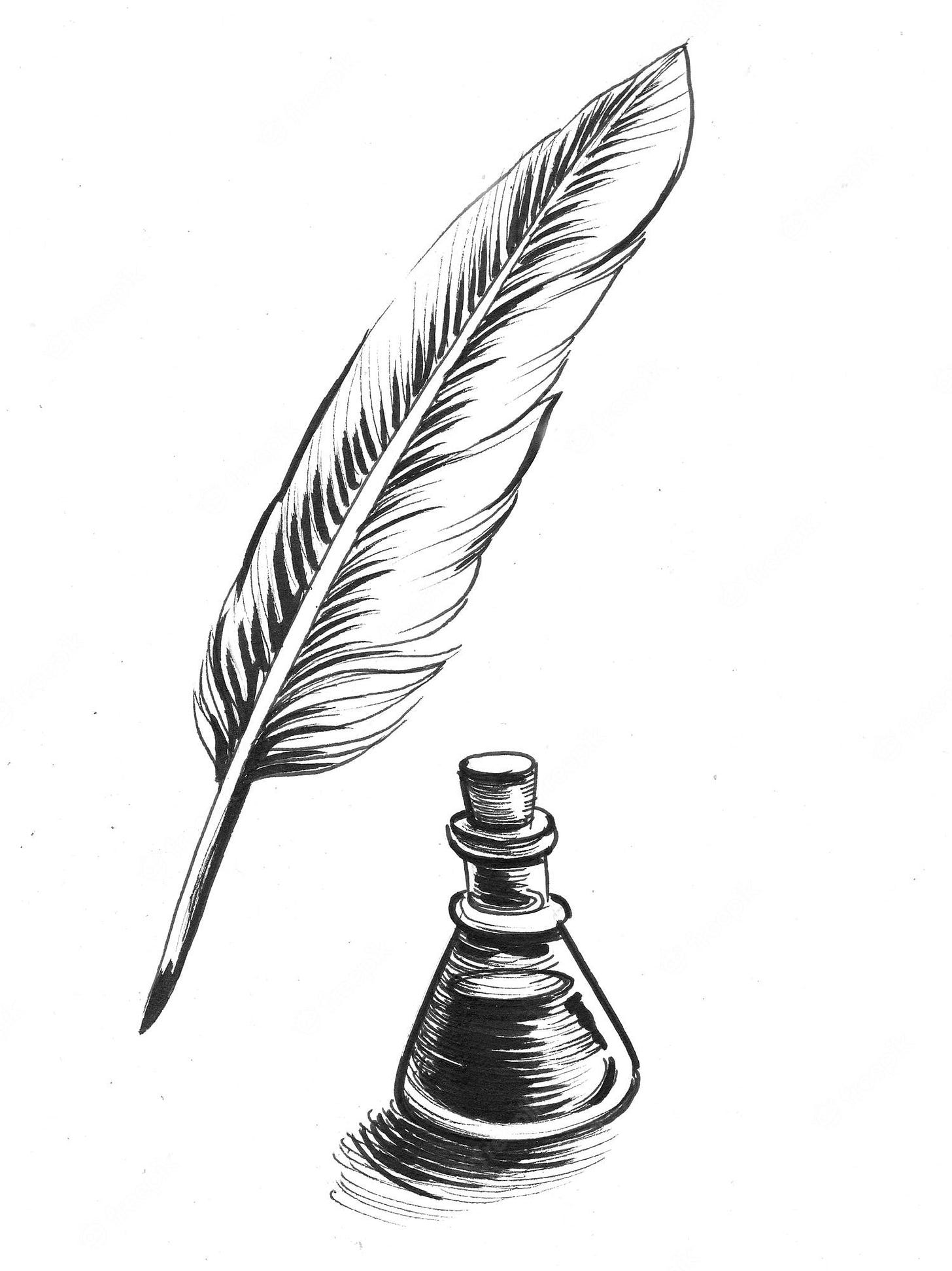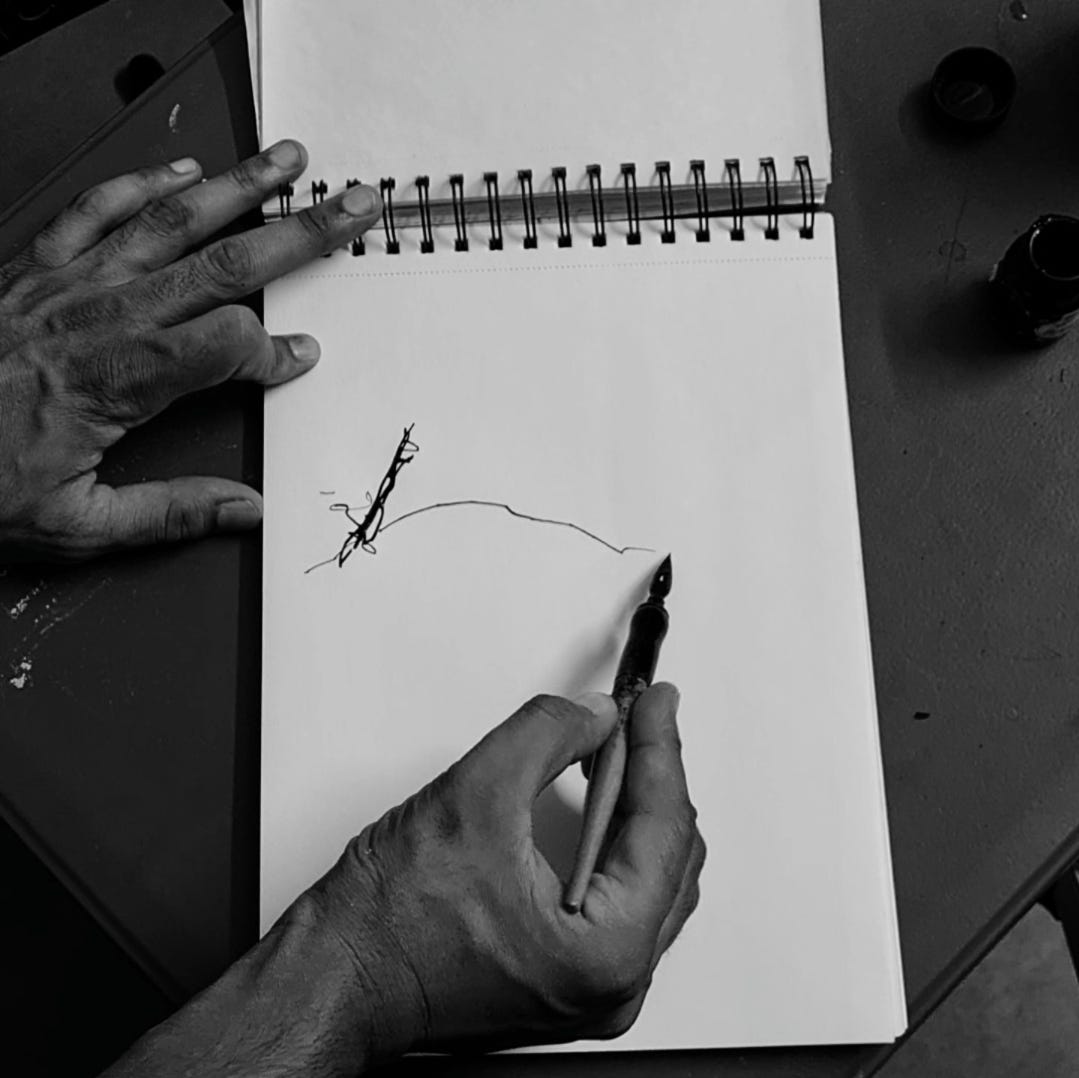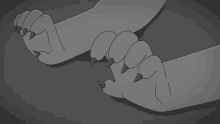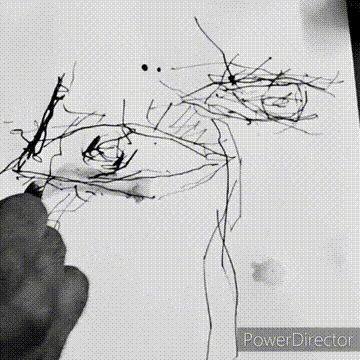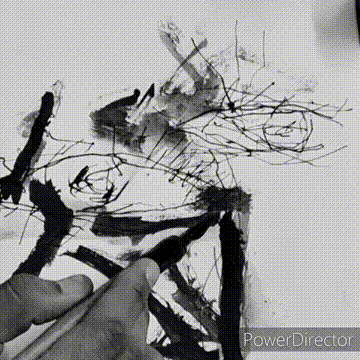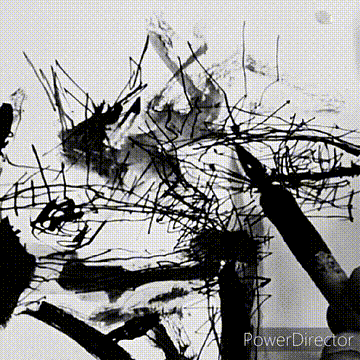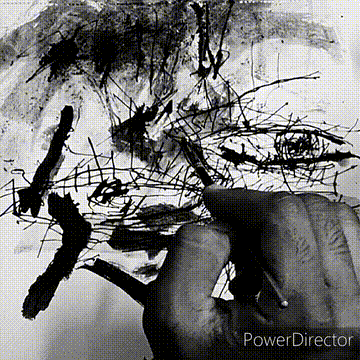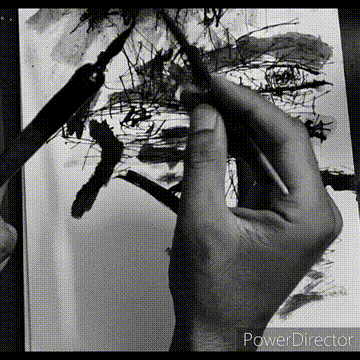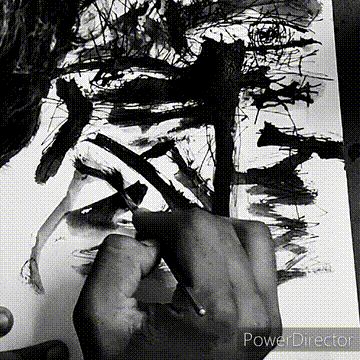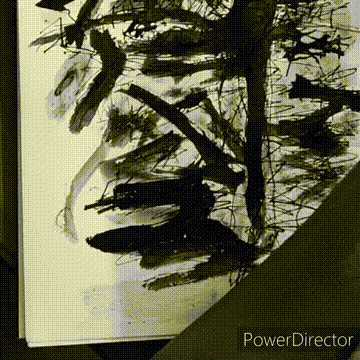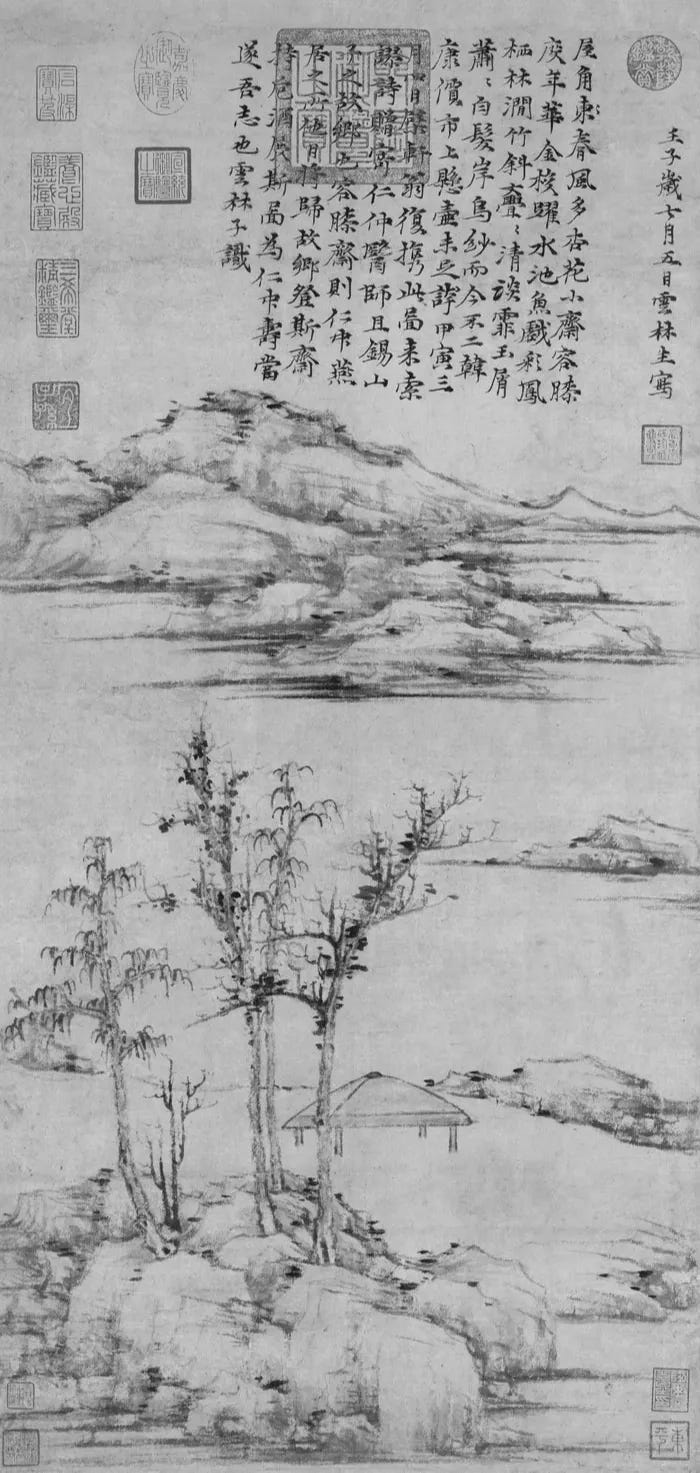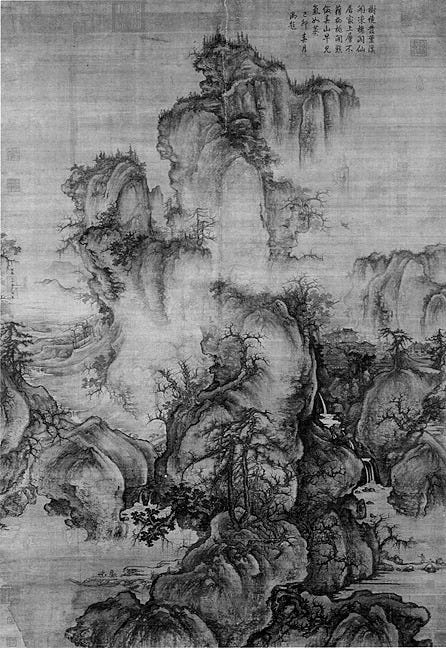Uneven flow
One could try ruthless self-introspection aided by the ancient art technique of ink and crow quills
“I think it’s important to remember that making art is a process. It is never finished. The occupation itself is one of process, exploration, and experimentation. It is one of questioning and examining.” — Mel Robson
“The true use of art is, first, to cultivate the artist’s own spiritual nature.” – George Inness
“The emotions are sometimes so strong that I work without knowing it. The strokes come like speech.” – Vincent Van Gogh
“I try to show you as closely as possible what goes on inside the head of an artist, how he creates a work of art starting from the emotion in the head and going up to the final sketch. My skills in words is limited but my belief for art as a source of joy and as a source of therapy / healing is very strong” - Me
He wasn't happy. And he did not exactly know what was keeping him away from happiness.
On the surface, everything in his life was going OK but his mood just did not reflect that. He felt that his head was clouded. He was not able to read his mind and identify the reasons behind his unhappiness.
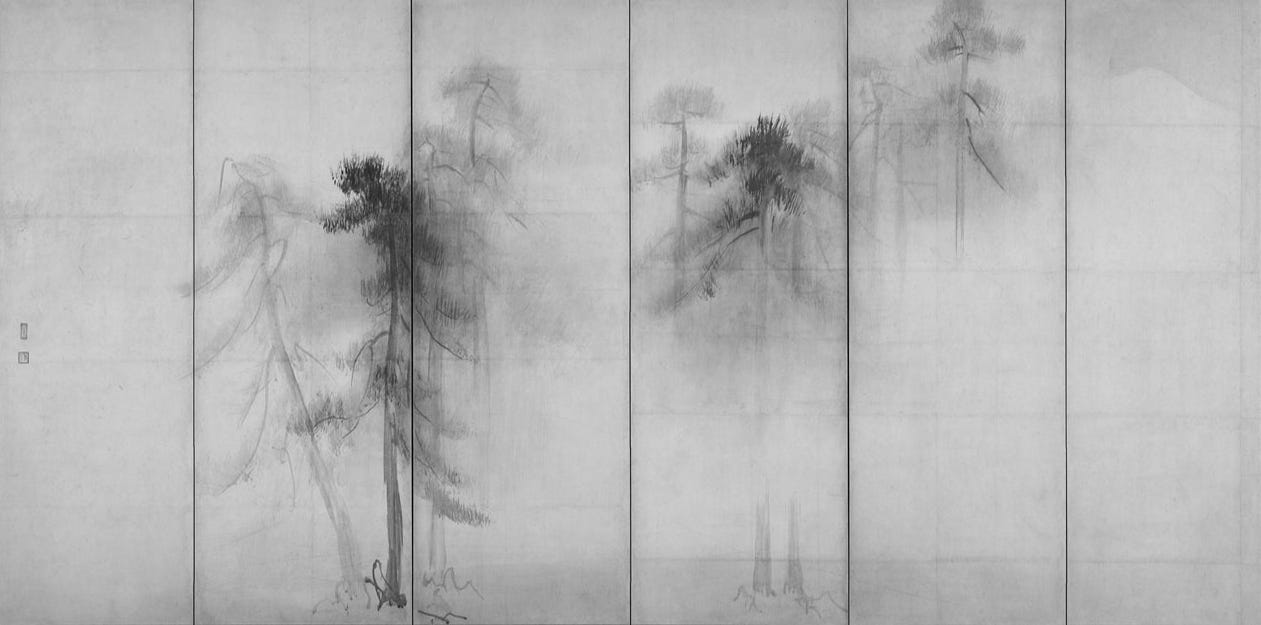
He knew had to take out time and identify the root cause of his unhappiness.
He knew he had to peel through the layers and layers of debris i.e. laziness, lack of time, lack of energy, Instagram distractions etc. that had accumulated over him to get a peek into the real reasons behind his unhappiness.
He knew that nothing could help him better here than a “crow quill” pen - a modern version of the ancient feather pen with a very pointed fountain pen like nib and which can only hold ink for just a few strokes before it has to be re-dipped into the ink bottle.
And so our man sits down with the crow-quill pen, an ink pot, a couple of brushes and his art notebook.
He allows his mind to run freely. He does not judge or stop any thought or emotion.
As he is thinking he picks up the pen, dips it in black ink and starts carving lines on the paper.
His wants his attention to be completely on his thoughts and not on the sketch that he will be making. So he decides to draw a thing very, very familiar to him - a pair of eyes. He has drawn eyes thousands of times before in doodles, in paintings, and in sketches. Drawing eyes comes as naturally to him as eating as trimming his nails.
The quintessential character of the pen is that it does not let him to draw freely and smoothly.
The pen’s tip is quite sharp and with each stroke it slightly tears the surface of the paper and makes a scratching sound. He can only draw a few short and sharp lines before the ink runs out.
As he is drawing, each scratchy stroke of the pen prompts him to ask a question to himself - What is troubling you? Why are you disturbed? Go deeper, think, go deeper, think.. ..identify what are the real reasons behind your unhappiness, behind you feeling weak and numb?
Through these questions he is slowly clearing off the debris / the cloudy mist in his head that is keeping him away from seeing the real cause of his unhappiness
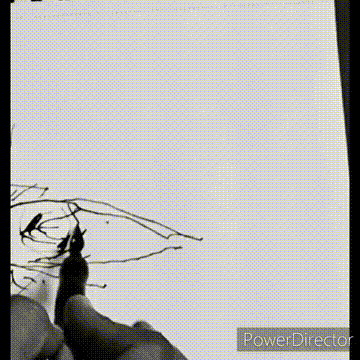
But this is getting too painful for him. The lines are just too dry and thorny. After a few minutes of these scratching lines, he has already started feeling a lot of pressure to just get to the root cause as quickly as possible. He feels like he is being interrogated in a police room to get the truth out of his mouth.
His mouth is getting dry. Dry lines can only get him so far. He now really needs some fluidity, some smoothness to get going. So he adds a bunch of ink-filled brush strokes.
Now that his mind had been accustomed to both - the questioning power of the sharp crow quill strokes and the smoothness of the paint brush - he is getting some answers as to what is hurting him and now he is ready to go to the next level of questioning.
He starts deepening his self-introspection - “Now that you are starting to feel that your unhappiness is because of your paranoia about falling seriously ill, you need to dig deeper to understand why is it hurting you when usually people just just don’t think so much about their health? What illness / condition / situation are you getting afraid off? Why are you not able to snap yourself out of it?”
And as this questioning continues, he layers his new crow quill strokes gently on top of the previous ones - with more ink, with more gentleness, with more cohesion.
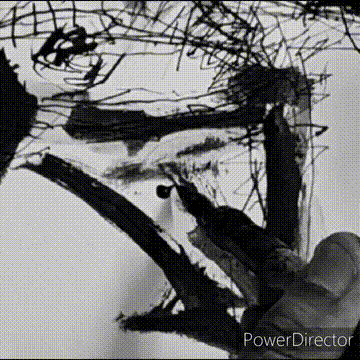
As his mental fog is thinning and he is able to discover more about what is hurting his happiness, his ‘forms’ (the shapes he is making on paper) also get more defined..
With each new stroke his clarity about his own unhappiness-causing thoughts increases. He is able to see that right now its his health related anxieties which are not allowing him to fully experience happiness.
He continues to draw as he tries to brings all the dimensions of this health anxiety to light - what is causing him to be more paranoid about his health than a normal person? why can’t he accept this level of uncertainty about him falling ill and move on..?
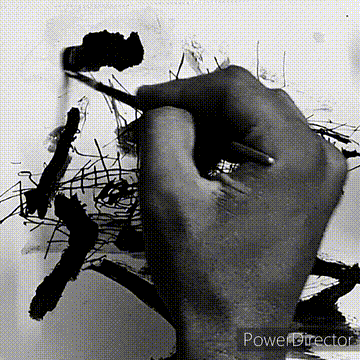
As more dimensions of his health anxiety are being brought to light, the fog in his head further thins and he is starting to feel lighter.
Perhaps, this is how art therapy or other common therapies work. The more the patient is able to uncover and face his own anxiety / unhappiness causing thoughts, the more he feels that the grip of these thoughts are lessening on his mind and he is getting in control of them.
Now that he feels that he has fully uncovered the cause of his unhappiness (i.e. health related anxiety), he now wants the sketch to become a symbol of this unhappy mental state that he currently has because of health anxiety.
Artists usually get a tremendous amount of joy when they are able to create something that accurately expresses / symbolizes what they are feeling inside their head. More the accuracy, more satisfied is the artist.
So he feels that this sketch cannot be simple and easy to understand because the health anxiety itself is quite complex, has many reasons behind it and fear and other emotions associated with it. The brush and crow quill lines have to create a face that is scarred and weary from fear, a face whose eyes are weak and looking for a place to hide, a face whose contours are distorted like the complexities of anxiety and a face which has no clear cut expressions just like how this anxiety has clouded his mind and left him with no-clear cut explanations of his unhappiness.
He knows that if he does not concentrate on making the sketch true to his mental state than it will become stale very soon.
He wants the sketch to be such that even long after he has forgotten this episode of his unhappy mental state the sketch still retains something fresh, something non-boring, something worth looking at for him.
So he scrutinizes each and every detail of the sketch and keeps adding his thick and thin lines and patches of black till he becomes satisfied with the look of the sketch.
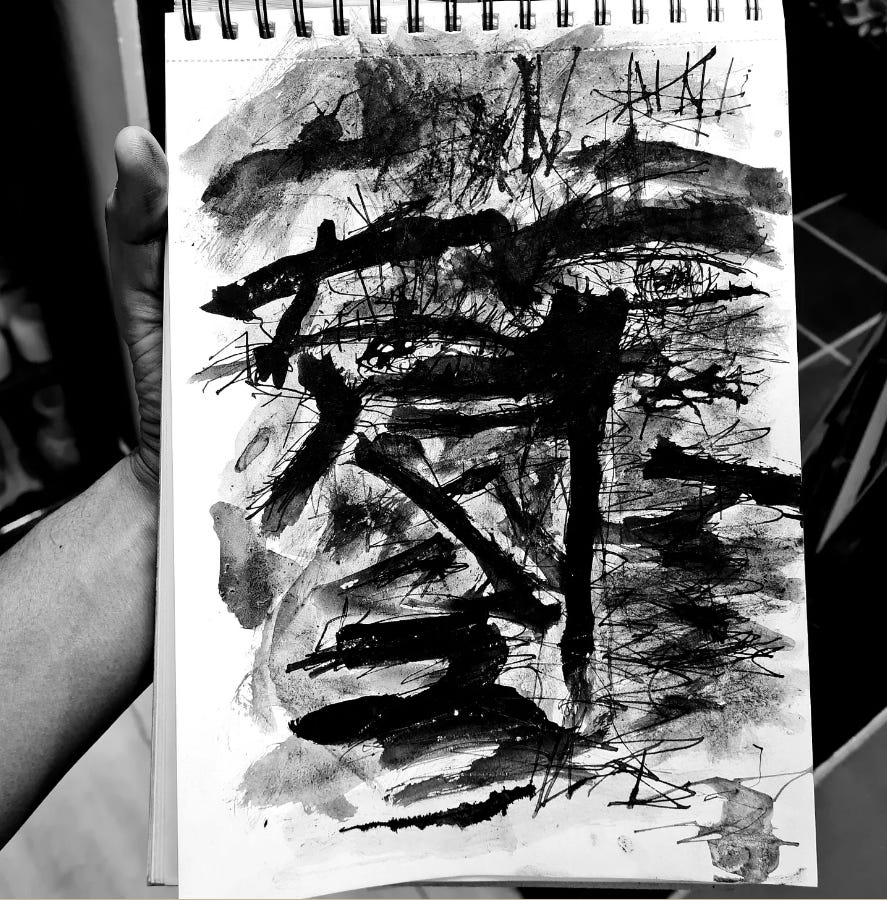
Here are some ink paintings that he loves and which must have exerted their influence in his lines as he was creating this sketch.
I hope you too try creating something using crow quill pens. Its a unique experience. Asks a lot of patience from you.
I would love to hear your thoughts about this post. Please comment below or reply back to this email. Thank you!




